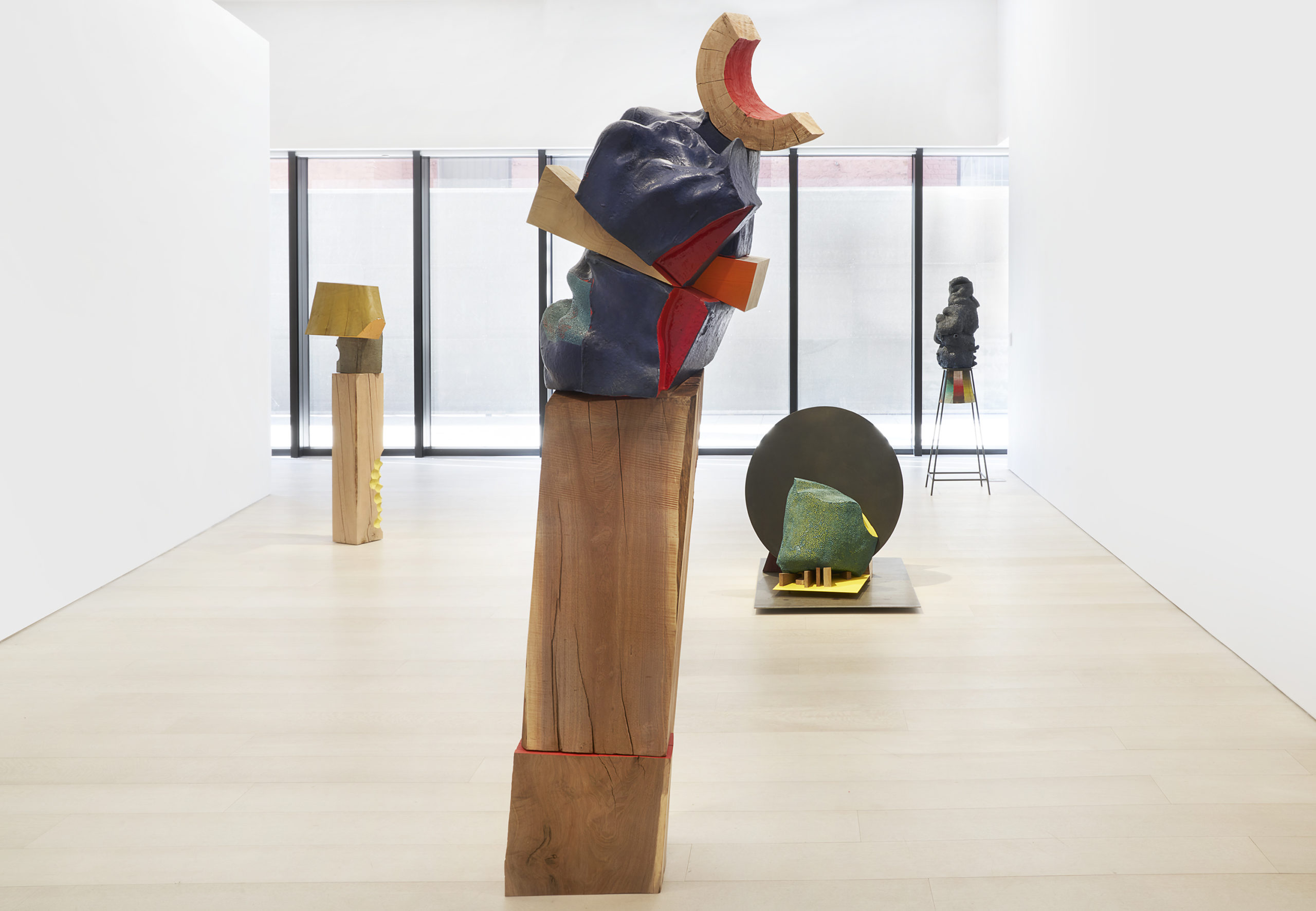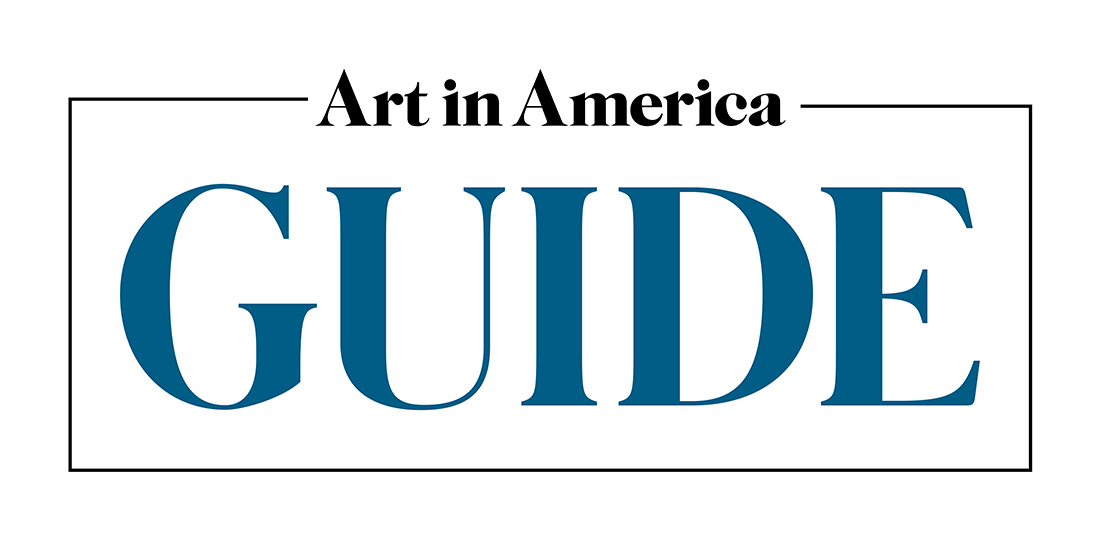
- This event has passed.
Viewing Room | Arlene Shechet: Skirts
March 12, 2020 - April 25, 2020

Rich in idiosyncrasies, Arlene Shechet’s latest works combine disparate mediums, from ceramics to wood and metalwork, with playfully ambiguous titles that prompt endless associations.
Image:
Installation view, Arlene Shechet: Skirts, February 28 – April 25, 2020, Pace Gallery, New York © Arlene Shechet
Utilizing a title that is both a noun and a verb, Skirts is a testament to the artist’s fluid and unformulaic process. Though her works appear effortless and forgiving of imperfections, they are the belabored products of an intuitive and technically fastidious approach, involving casting, painting, firing, carving, stacking, undoing and redoing with no predetermined endpoint. Her expansive approach to sculpture and materials is reminiscent of artists Shechet admires, such as Sophie Taeuber-Arp and Sonia Delaunay, whose work transcends the divisions of painting and sculpture and encompassed innovative multimedia practices, distinguishing their work from that of their male peers. Shechet’s title, Skirts, also reclaims misogynist slang. As if to counter this term’s reduction of women to passive things, Shechet’s unruly, polymorphous sculptures suggest that objects themselves are active and subversive.
The potential of structure is a central concern that Shechet’s latest production explores with virtuosity. Magic Matters, for example, reveals itself as a counterintuitive pas de deux: from one side, two rectangular steel sheets seem to compress a sliced log into a starkly geometric and gravity-defying planar arrangement; from the other, this tension is suddenly released as the same wooden and metal pieces appear to unravel to the ground. Similarly, Shechet’s larger-scale assemblages are seemingly precarious stacks of massive logs juxtaposed with bronze or ceramic parts. In spite of their bulkiness, these works suggest motion, whether the swaying of skirts, teetering of towers, or slow growth of organisms. Shechet’s incorporation of wood in forms still identifiable as tree trunks suggests a kind of taming on the artist’s part, with each carefully crafted piece incorporated without detracting from its wild rawness. The result is a type of sculpture that confounds the man-made with the organic, a reminder that humankind is neither apart from nature nor unrivaled in its creativity.
Shechet’s sculptures appear to be suspended between the living and inanimate. An encounter with a piece such as Grammar suggests an immediate and bodily kinship. A bloated and lumpy vessel, it seems to churn with the vitality of a stomach or lungs. Punctured by tubular openings, or what Shechet calls “breathing holes,” the sculpture offers its orifices as portals through which to see internal, structural mysteries.
To Shechet, who has long mastered the technical difficulties of creating glazed ceramics, color is not extraneous to structural problems. “In firing the glaze into the clay, the color becomes part of the structure,” she observes. Even in works devoid of ceramics and hence glaze, Shechet retains this understanding.
Shechet’s dismantling of the conventions of sculpture is also apparent in her treatment of the base; the work’s “skirt” is integral to her work’s logic. She achieves this integration through a variety of means: a pedestal-like form might appear at the top of the work, as in Ripple and Ruffle, or a base of metal or wood might determine the contours of the ceramic forms that hug and exceed the edges of its “base.” Casting ceramic parts from these supports to create a seamless interlocking, Shechet’s sculptures absorb their idiosyncratic pedestals, expanding and even encompassing the room, since Shechet choreographs the placement of her works—“a family of actors” in her own words—to form a totality that enlists architecture, light, and ambulant bodies in its play.
Yet Shechet’s reversal of hierarchies is not confined to the skirt of her works. It is not merely formal. Through her work in clay, paper, and porcelain, Shechet has continuously demonstrated the critical force, as well as aesthetic richness, of mediums and traditions historically marginalized as craft, to wit, gendered as the purview of women. Such masculinist policing of boundaries can no longer hold in the universe that Shechet’s art conjures so powerfully—a place of flux and transformation, where the unmooring of oppositions, identities, and hierarchies can be conceived and felt.
Pace’s online viewing rooms offer rich contextual lenses through which to engage with our artists’ work and exhibitions. To inquire about any of the works featured in this exhibition, please email inquiries@pacegallery.com.
We invite you to explore our other Viewing Rooms including Saul Steinberg: Imagined Interiors, James Turrell, Julian Schnabel: The Patch of Blue the Prisoner Calls the Sky, Paul Graham: The Seasons, A Swiftly Tilting Planet and Noland: Flares.
